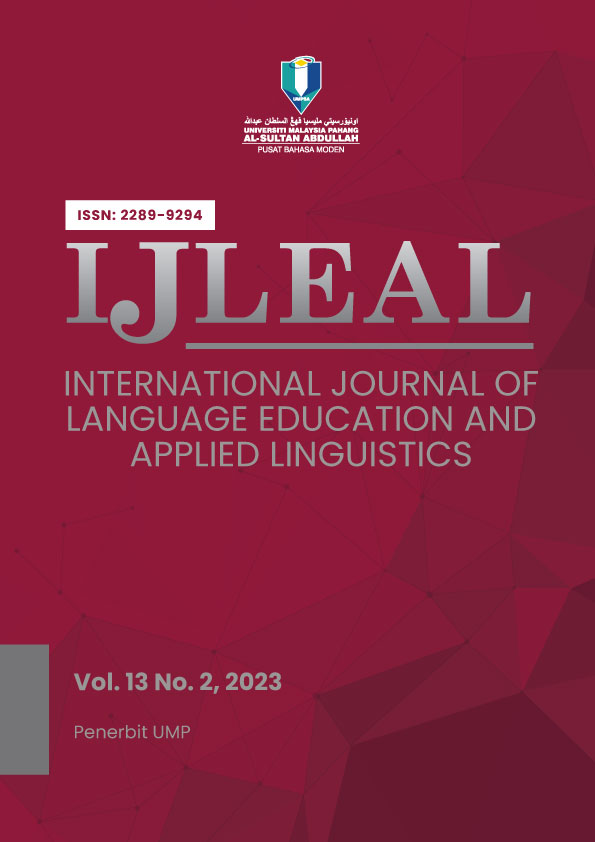A Corpus-based Analysis of Ten Most Frequently Used Part-of-speech Constituents in Descriptive Writing
DOI:
https://doi.org/10.15282/ijleal.v13i2.8638Keywords:
Corpus analysis, Descriptive writing, Distribution pattern, Nigerian students, Part-of-speech constituentsAbstract
This study is set to examine variation in the use of Part-of-Speech (POS) constituents in the contents of descriptive writing by Nigerian undergraduates using a corpus-based approach. The objective is to identify the ten most-frequently-used POS constituents they used. It also aims to identify the level of frequency variation and distribution patterns of the POS constituents used based on gender and ethnic groups. This study adopted the EAP theory and the usage-based theory. The method applied is quantitative descriptive research design and the samples include thirty (30) Nigerian undergraduates that were identified via purposive sampling. The corpus is subjected to a computer-assisted corpus analysis (CACA) where 33, 274 words were tagged and compiled. The findings revealed NN, NN1, II, AT, JJ, TO, NN2, RR and CC as the student’s ten most frequently-used POS constituents, as they achieve higher frequencies. In terms of gender variation, the findings revealed that males achieved a higher frequency of the words used, as equated with females, even though the level of variation at 0.90% is below the statistical level of significance. Also, in terms of their ethnic groups, no significant level of variation was identified, although the Igbo attained a high frequency of words-usage compared to the Yorùbá and the Hausa. Among the theoretical implications derived in this study are the deployments of the corpus-based, genre-based, EAP and ESP-oriented approaches into Nigerian ESL classroom activities.
Downloads
Published
Issue
Section
License
Copyright (c) 2023 The Author(s)

This work is licensed under a Creative Commons Attribution-NonCommercial 4.0 International License.




